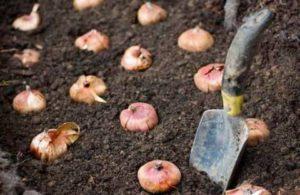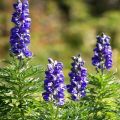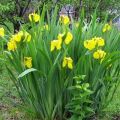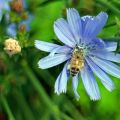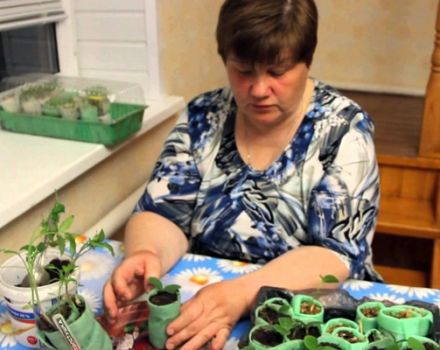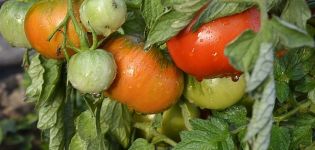Planting and caring for lakonos in the open field, breeding methods and cultivation
This is an exotic plant that came from overseas. The flower feels great in unprotected soil. Does not require special growing conditions and perfectly adapts to the local climate. Lakonos differs from other crops in the peculiarities of planting and care.
Description and characteristics of the lakonos flower
The plant belongs to the Lakonosov family. The original name of the flower is phytolacca (Latin). Lakonos can look like a liana, tree or shrub. In the conditions of the country, the most common is the American lakonos.
The leaves of the plant are ovoid. They reach 6 cm in width and 20 cm in length. The drooping racemes are covered with round smooth berries.
During the flowering period, the bush is covered with small flowers. They reach 5 mm in diameter. Flowering lasts 2 months - from July to August. Fruiting occurs in the fall. Brushes with berries are like chestnut candles.
Lakonos is known for the healing properties of its rhizome. It is a source of vitamins and elements that have a positive effect on the human body. Berries are not used as food, as they are poisonous.
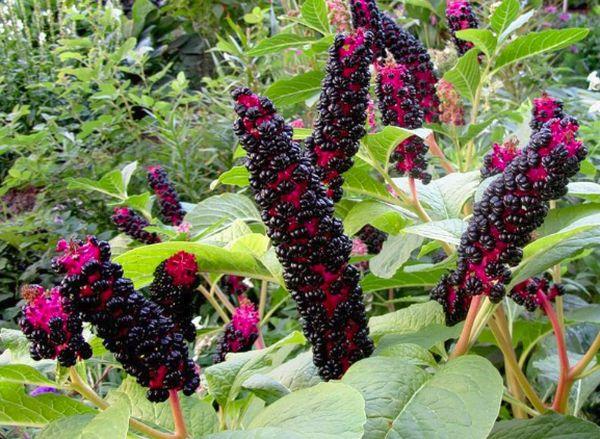
Varieties and varieties of plants
The following types of lakonos are suitable for growing:
- Drupe or berry. The main feature is the dark green leaves. In appearance, they are very similar to blackberries.
- Grape. After flowering, the branches of the lakonos are covered with dark berries. They continue to remain on the branches until the end of October. Grape lakonos is used for the preparation of medicines.
- Edible. The inflorescences are so large that they resemble corn cobs. Flowering occurs in mid-summer. Ripe fruits are glossy.
- Polycarpous. One of the existing varieties with a compact size.
The edible phytolacca is suitable for cooking.
Features of growing crops
Lakonos, like other plants, has its own growing characteristics.

What should you consider before boarding?
Before planting seeds in spring, they must undergo a stratification procedure. For this, you can use any known method. Seeds are stratified within 3 weeks. After that, the seeds are placed on a damp cloth for 2-3 days.
There is no point in the disinfection procedure. The material can be treated with growth stimulants. This will sprout the seeds even faster.
Location and soil
Lakonos is afraid of direct sunlight, but it needs a lot of light.The best place to land is an area with little shade, well protected from the cold wind. Phytolacca has a powerful root system, and in height it can reach 2 m. Therefore, it is not recommended to plant any plants nearby, as they will not survive.

Lakonos grows well in secluded places. It is planted near fruit trees and bushes. Flowers tend to scare away harmful insects.
Lakonos is unpretentious to the soil and is able to adapt to any place designated for it. It prefers slightly acidic chernozems with a loose structure. It grows on loams, as well as areas with a high content of sand and peat. A prerequisite for the soil is good drainage and high humidity.
Landing
Seed material is sown in open soil in early spring or before winter. They are sprinkled with earth and regularly watered until young shoots appear on the surface of the soil. In beds with sprouts, weeds are removed so that the culture can develop calmly. After planting, it takes from 1.5 to 2 years, and the first flowers appear on the lakonos.
Lakonos care
Although the culture is not demanding, the appearance, flowering, fruiting and other factors still depend on the person.
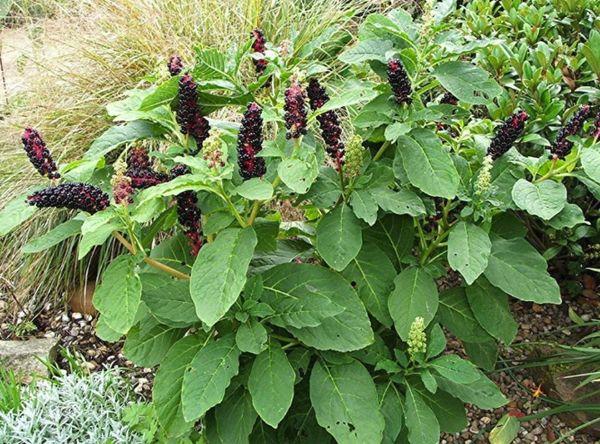
Fertilizing and feeding
2 weeks after the emergence of seedlings, they begin to feed the plant. For this, organic and mineral substances are used. The most suitable fertilizer for the lakonos is the mullein. Thanks to him, a person gets the maximum decorative effect from the plant.
Mullein is introduced no more than 3-4 times in the first growing season. If you refuse this fertilizer, the bush will grow slowly, and small leaves will bloom on the branches. Flowers will also not stand out with special beauty.
During the flowering period, gardeners are advised to apply mineral fertilizers. As a rule, this falls in July. It is possible to understand that an adult plant does not need feeding by its appearance. It looks beautiful, the green mass is juicy and has a rich color. The flowering is profuse and the fruit clusters look incredible.
Watering rules
Phytolacca is a moisture-loving plant. Needs constant watering at the root and does not tolerate dry periods. At the same time, it is forbidden to water the plant very often, as there is a threat of overflow. In turn, this will lead to rotting of the root system.
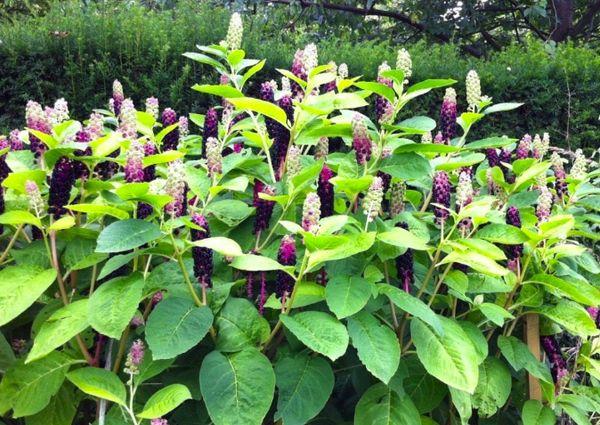
The plant will disappear from such actions. Water the lakonos after the topsoil is dry.
Preparation for wintering
Whether a culture can successfully survive the winter depends solely on the person's approach to this issue. Transplanting is permissible only in spring, so that the young plant takes root in a new place until autumn. In autumn, the entire aerial part of the lakonos is removed. Any sharp object will cut off the stems and leaves.
The area where the lakonos grows is covered with a layer of mulch. To do this, take peat and scatter it over the surface of the earth. Dry leaves are poured on top.
This shelter allows the culture to survive the winter safely and flourish with renewed vigor in the next season. Mulch conserves heat, but at the same time provides air exchange so that the plant does not rot. In the spring, after the last frost has disappeared, the mulch layer is removed.
Lakonos diseases and pests
Phytolacca is a plant with bactericidal properties. The substances that are in the tissues do not give bacteria and fungi a single chance to attack the culture. Phytolacca is avoided by diseases and pests.
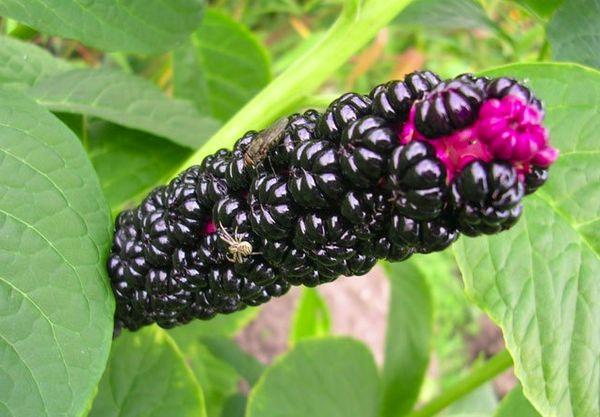
Lakonos is able to protect not only itself, but also neighboring plants. Therefore, it is customary to plant it together with shrubs and trees, which often survive pest attacks.There are many such representatives in the garden, and the laconos will reduce the number of chemical treatments by half.
Reproduction methods
There are two options for breeding lakonos:
- dividing the bush;
- seeds.
In the spring, a young bush, whose age does not exceed 5 years, is dug up and divided into parts. There should be a lot of free space between the newly transplanted bushes. During growth, they should not interfere with each other. Otherwise, it will affect the appearance of the lakonos.
Bushes over 5 years old cannot vegetatively propagate. The older the plant is, the harder it is to dig it out of the ground. He has a massive root, which during this time manages to go deep into the soil. In addition, there is a possibility that a large plant simply cannot take root in the soil.
It is also possible to propagate lakonos by seeds. They can be bought at a specialty store or extracted from berries at home. It is not difficult, as many people think.
For some growers, planting seeds is a great pleasure. A huge and very beautiful plant grows from small seeds.
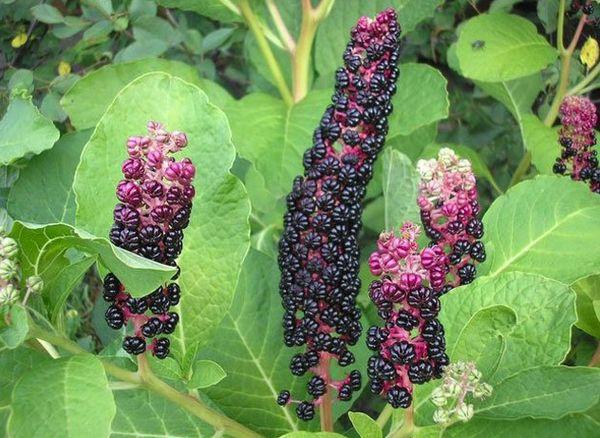
Application in landscape design
Lakonos is a real decoration for flower beds, walls, fences and other places that require the "intervention" of beauty. Phytolacca looks spectacular with other flowers planted nearby. The plant is combined with all kinds of flowers and herbaceous plants.
Lakonos can be successfully used for single plantings. Having the shape of a bush, it attracts admiring glances. It is often planted around the perimeter of the land. It grows near a fence, high walls, and also surrounded by trees.
Lakonos is considered a hardy plant. But for good development it needs human help. Decorates the garden in summer and autumn, but looks best in the cold season.
With the onset of the first cold weather, the leaves turn purple, the bark darkens, and the green fruits turn dark purple. To enjoy such an unusual view, a person must make a minimum of effort. The performed actions must be correct.

